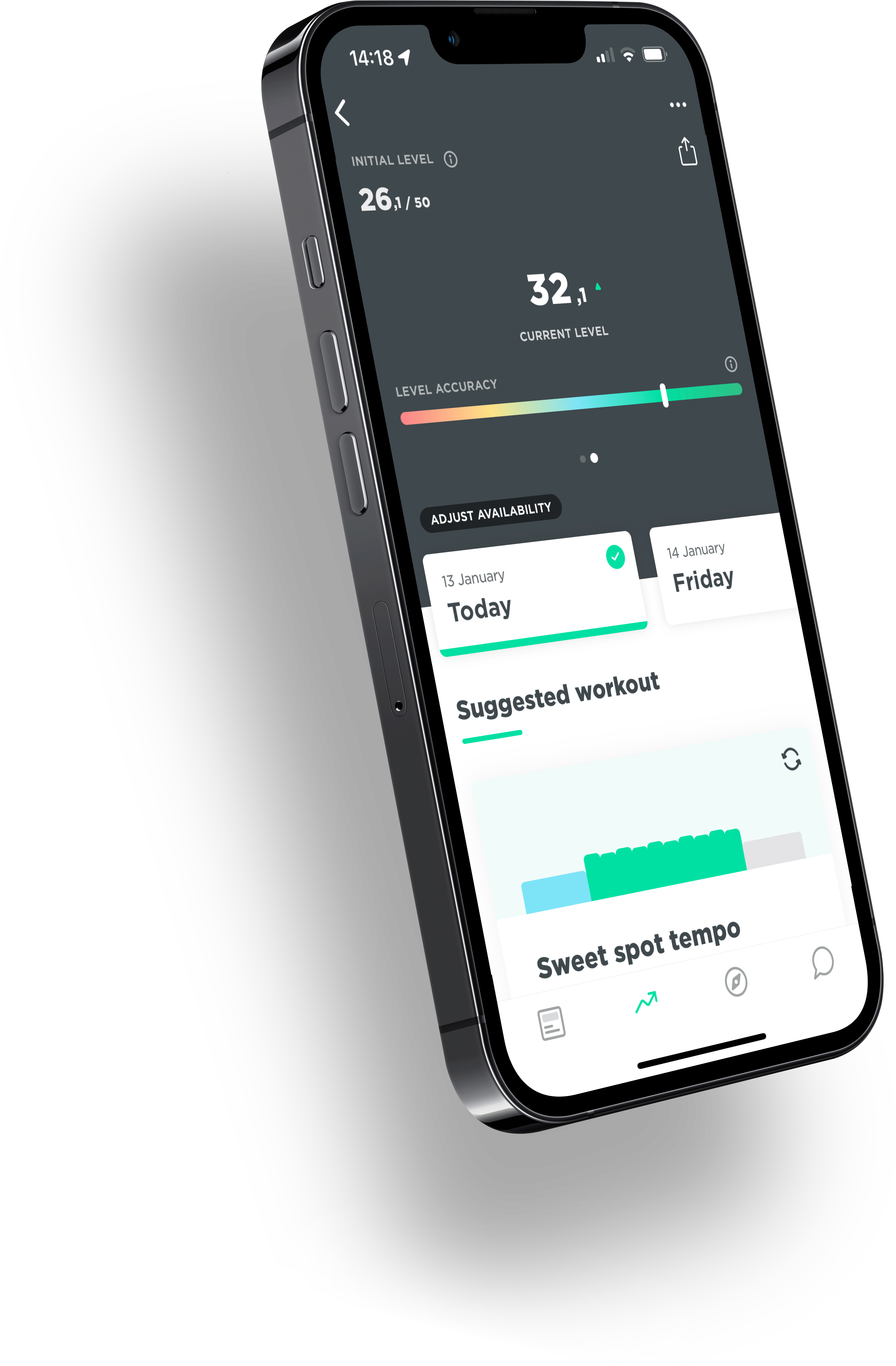Many cycling races end in a sprint. If it’s not a bunch sprint, it’s likely a leading group that sprints for the flowers or a classic sprint à deux that decides who stands on the highest step of the podium. Even some of the most gruesome mountain stages often see a sprint finish. So if you, as a cyclist, keep insisting that you can’t sprint, your chances to ever win a race are close to zero and you’d better start playing chess. Of course it’s a bit crazy that races of more than 200 km are only decided in the last 200 meters, but it is what it is! Which elements actually determine whether you can sprint well and how can you improve your sprint? In this article we will try to answer these questions.
The importance of peak power.
With the rise of the power meters, we can now get a nice glimpse into the sprinting capacities of the pro peloton. Often the maximum produced peak power is looked at. Power equals the delivered energy in a certain time frame and is expressed in Watts. The shorter this time frame is chosen, the larger the power output, or the so-called peak power. Because a sprint can last up to 20 seconds, the delivered peak power over 1 second is not very meaningful. However, the peak power can say something about the acceleration and this is very important in sprinting. To dive deeper into this, we first have to look at which resistances have to be overcome in sprinting.
Which resistances work on a cyclist?
The sum of all forces acting on a sprinter equals the mass of the sprinter (plus the bike) times the acceleration. This is nothing other than Newton’s second law and you can always impress your audience with it at drinks and dinner parties. It follows that it takes more power to give something heavy the same acceleration as something light. The forces that play a role in a sprint are firstly the force that the sprinter delivers on the pedals and then the opposing forces: air resistance, the rolling resistance, and, when the road goes up, gravity. When the force delivered by the sprinter is greater than the counteracting forces, the sprinter continues to accelerate. When the sprinter delivers exactly the same amount of force as the other forces working against him or her, he or she will keep cycling at a constant speed.
What is the most important resistance?
Gravity is a constant counteracting force depending on the weight of the cyclist. As far as rolling resistance is concerned, a lighter cyclist also has an advantage and it matters what kind of tires you have fitted and, of course, the tire pressure. But by far the most important counteracting force is the air resistance, at least on the flat, and that is where most sprints are decided.
What is the effect of frontal surface and drag?
The harder you go, the more air resistance you have to overcome. Two factors are particularly important here, and that is the size of the frontal surface and the so-called drag coefficient. With a small frontal surface you need to move less air when you want to go through it and the drag is smaller. The drag coefficient is a measure of the extent to which the displaced air ‘sticks’ to the cyclist. Closely related to this is the turbulence or ‘wake’ that occurs behind the cyclist, ideally it is as small as possible.
What are good power numbers in a cycling sprint?
To give an insight in how these resistances and power relate to each other, we take the data of an ‘unknown’ sprinter who wins the bunch sprint of a Grand Tour stage. These data are from a study that does not want to reveal the name of the sprinter. The peak power of this sprinter was only 1097 W. On the other hand, he managed an average of 926 W for 14 seconds, after a ride of more than five and a half hours during which the last three minutes he had to deliver an average of 490 Watt to keep up with the pace and in the last 64 seconds even delivered more than 600 Watt. That’s quite impressive. In these 14 seconds the sprinter managed to accelerate from 58.5 km/h to 65 km/h. The power output of 926 Watt can be split up in rolling resistance (54 W or 6%), air resistance (688 W or 74%) and acceleration (184 W or 20%). This shows how important it is to sprint as aerodynamically as possible. Think of Mark Cavendish, who often seems to touch his front wheel with the tip of his nose!
What is better; sitting or standing sprinting?
Research has shown that sprinting out of the saddle can increase the power output by 8 %-12 %. However, the frontal surface area and thus the air resistance also increase. At really high speeds the increase in the available power can therefore sometimes be less than the increase in air resistance, so it’s better to sit down again quickly. Track sprinters that regularly reach 80 km/h, often sit down again quickly after their initial acceleration. The extra power released during standing sprints comes from the upper body, which is transferred over the hip joint. This indicates that for sprinting the upper body should be well trained. This is in line with the observation that track sprinters are generally very muscly guys. However, in road cycling you often first have to overcome 200 km over hilly terrain, where you don’t want to carry this extra muscle mass. That’s why professional cyclists are actually all well-trained endurance athletes.
Which muscle fiber types do you need in a sprint?
Besides aerodynamics, success in a sprint is largely determined by muscle volume and muscle fiber type. Research has shown that thigh size can explain 70 % of the variation in peak power of different cyclists. It is therefore worthwhile to keep a close eye for the size of your competitor’s thighs. In addition, the distribution in muscle fiber type is important. Two muscle fiber types can be distinguished: the slow-twitch, type-I fiber and the fast-twitch, type-II fiber.
The main distinction between these types of fibers is that type-I fibers have a lower optimal contraction rate and produce less power than type-II fibers. On the other hand, type-I fibers can sustain an effort much longer. Type-I fibers have a higher blood flow and are rich in glycogen and aerobic enzymes. These fibers produce relatively less power, but can keep that production up for a long time by aerobic combustion. Type-II fibers work mainly on anaerobic energy, so without the presence of oxygen. But the formation of lactate that comes with anaerobic energy production causes these muscles to not be able to produce power for very long. But they can contract up to 5 times more vigorously (per muscle mass unit), delivering much higher peak power. It should be noted that through training, part of the type-II fiber can be turned into muscle fibers with mainly type-I properties. However, there is also a part that cannot be ‘tuned’ by training, and the extent to which you have these powerful fibers is innate. In sprinting, therefore, genetics play a big role.
What is the ideal cadence and crank length in a sprint?
The extent to which you have both types of muscle fibers and the distribution of type of muscle fibers determines the optimum pedal speed to produce as much power as possible. This pedal speed is determined by the crank length and the pedaling frequency (cadence). Someone with mainly type-II fibers has a preference for a higher contraction speed and thus a higher pedal speed than someone with a lot of type-I fibers. Research with track sprinters has found that on average most power is produced at 120 to 140 revolutions per minute. For more endurance-trained athletes this number will be somewhat lower, but it is important to note that the chosen bicycle gearing must allow the cadence to reach at least 110 to 120 rpm. If you choose too heavy a gearing, the powerful type-II fibers will not be able to use their full power. Research has shown that crank length makes little difference in the maximum peak power produced. There are no significant differences in peak power between the commercially available crank lengths (from 165mm to 180mm).
What is the effect of good positioning in a sprint?
But the most important factor in sprinting on the road turns out to be positioning. As explained earlier, by far the biggest resistance to overcome is air resistance. By positioning behind a teammate or competitor this resistance can be reduced by up to 25%. The point is of course that when you start from someone’s wheel you have to overcome two more meters. If you come from the tenth position you have to deal with terrible slow sprinters if you want to have some chance of winning. A mathematical model was developed that uses two sprinters that can both produce exactly the same amount of power as the professional cyclist in the example above. The sprinter that starts from the wheel will overtake the sprinter in front within 8 seconds and eventually win with 1.05 meters difference over a sprint distance of 236 meters. The sprinter who starts the sprint in third place will have to settle for third place with the same amount of power.
Sprinting is a complex affair. An important factor that determines the success in sprinting is the aerodynamic resistance that has to be overcome. In addition, issues such as standing or sitting sprinting, pedaling frequency, muscle mass, muscle fiber type and especially positioning play an important role. Finally, a very important tip: continue sprinting until the finish line. You don’t want to become the next YouTube or Twitter celebrity that is ridiculed for celebrating a race win just a little bit too early.


